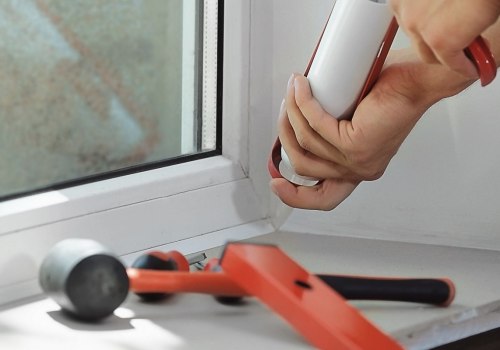Replacing windows and doors is a great way to improve the energy efficiency of your home, reduce heating and cooling costs, and create a healthier indoor environment. But in order to get the most out of your investment, you need to make sure that your windows and doors are properly sealed. Caulking and weatherstripping are two simple and effective hermetic sealing techniques that can help you achieve this. Putty is generally used for cracks and openings between fixed components of the house, such as around door and window frames.
Weatherstrippers, on the other hand, are used to seal components that move, such as operable doors and windows. When choosing a type of weatherstrip, make sure it can withstand the friction, weather, temperature changes, and wear associated with your location. For example, when placed on the bottom or on the threshold of a door, weather strips can creep over the carpet or erode as a result of foot traffic. When it comes to materials, felt and open-cell foams tend to be economical but are also susceptible to weathering, visible, and inefficient at blocking airflow.
Vinyl is slightly more expensive but holds up well and resists moisture. Metals such as bronze, copper, stainless steel and aluminum last for years and are affordable. Metal weather stripping can also give older homes a nice touch. Your windows and doors have a hard job. Like front doors to your home, they must be properly sealed in order to prevent window leaks when it rains, retain heat in winter and fresh air in summer.
Caulking windows to give them a finished look (inside and out) and sealing leaks and drafts is a fairly common DIY task. When installing windows or doors, make sure that the window unit is properly controlled and that the approximate opening is controlled. Then you can confidently approach the space between the two. Lean the window on the edge of the sill, tilt it vertically and slide it directly against the sealed coating.
Creating a rear barrier along the back edge of the sill stopper is one way to ensure that leaks from under the window cannot reach the inside of the opening. Wide enough to adhere to the coating, through the nailing flap and to the sides of the window frame. Identifying specific areas of an old window that need to be sealed is easier when there is a big difference between indoor and outdoor temperatures, usually in late fall or winter. To determine the amount of weatherstripe you will need, add the perimeters of all the windows and doors to be sealed and then add 5% to 10% to store any debris. While it's always best to replace old windows, you can seal old windows with simple, inexpensive techniques that go a long way in limiting energy loss. In an ideal world, the window unit and any jamb extension installed by the manufacturer have tight joints. But if not, you can use a fan test to evaluate tightness - close the window frame (the section that goes up and down) at the top of a sheet of paper and close the window.
The product commonly used to seal windows in all seasons is ready for rain and painting in just one hour.







